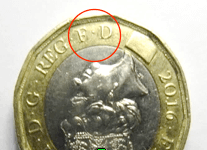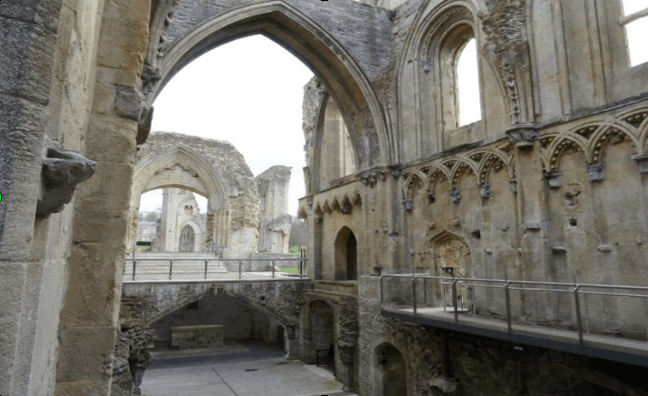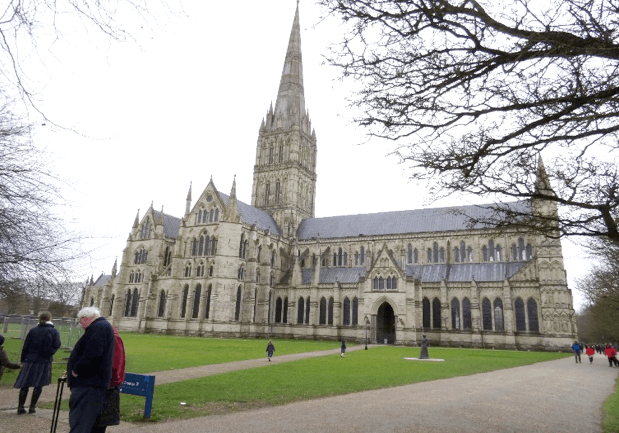The following is an excerpt from the book Global Conspiracy, by Hugh Williams, available at St Edward’s Press Ltd. To order the book, please visit the publisher’s website here.
This is part I of The Great Conspiracy in History That No One Talks About. Click here to read part II: People’s Lives Depended on, and Benefitted from, the Monastic System and here to read part III: If People Understood the Reformation Better, They Would Equally Understand the History of the Past Five Hundred Years Better
The Protestant Reformation and its Legacy
If we are looking for an event in history that might be considered at which this global conspiracy was launched, the main contender has to be the Protestant Reformation. It was this event that sparked a whole sequence of atheistic thinking; thinking that has influenced the way we have been taught both at school and ever since by the mainstream media.
What follows is a copy of an article that was first published on a website called alternativehistory.co.uk but, within a couple of weeks, someone hacked into the website and removed it. At the time of writing that website has not been restarted pending its security being upgraded.
For those who are like me and, for more years than I care to admit, just looked on the Reformation as being simply “another event in history”, may I list some of the things that I had been taught in school, or that I had noticed on my travels, but, instead of questioning them, I had merely accepted:
- Henry VIII’s six wives. Six wives? I mean, isn’t that, to use a colloquial expression, “going it a bit”? Shouldn’t that famous statistic have made me think?
- He oversaw the beheading of two of those wives (Anne Boleyn and Catherine Howard.) Shouldn’t that thought, even more than the previous one, have made me ponder?
- He divorced another two (Catherine of Aragon and Anne of Cleeves); and yet…
- He was a man, a king, who laid the foundations for the currently Established Church of England. Was a man, with this sort of record, a suitable person to make such far-reaching changes to the way Christianity was practised in the country he ruled?
- And here’s another thought: Having protested at the power of the Pope, Henry then went and assumed that very power for himself – and Henry wasn’t even trained as a priest, let alone ordained. I mean to say: Doesn’t that boggle the mind too?
Don’t all of these facts take one’s breath away? But these extraordinary facts are not the whole story of the Reformation – not by a long chalk.
Here are some more thoughts that I had also never questioned:
- Henry, having been awarded the title of Defender of the Faith for the defence he made of Catholicism against the Protestant Reformers, continued to parade that title after he had broken with Rome. This means that he subsequently used the Catholic title “Defender of the Faith” for the very opposite reason that it had been awarded; as indeed have all his successors to this day. If that isn’t hypocrisy, what is?
The letters FD, which stand for Fidei Defensor, Latin for Defender of the Faith, can still be clearly seen on all our coinage today
- The remains of mediaeval religious wall paintings that had been covered up (whitewashed over and worse) by the Reformers, together with the damaged statues that we see, all of which had been desecrated by the Reformers in their hatred of all things Catholic. What remains of these works of art are now, very properly, being revered and protected by their present custodians, who do the best they can. But how does one reconcile the fact that what was once mistakenly considered to be idolatrous is now treated with such deliberate and clearly deserved reverence?
- All those pathetic ruined Pre-Reformation abbeys, monasteries etc. that we see when we tour the British countryside. It never occurred to me to investigate the story that these ruins keep telling us, nor to wonder why they were left in ruins.
The ruins of Glastonbury Abbey – A telling reminder, and a crystal clear and irrefutable example, of what the Reformation did for England.
Now those were the things that, while glaring at me, nay demanding that I consider what they represent, I had just taken for granted; as, indeed, I suspect have many others before me. It took me nearly twenty years after leaving school for the awfulness of these facts and the hypocrisy that they represent to hit me. This understanding didn’t come to me until my late 30s, but once the truth began to dawn on me – once I began, as it were, searching in the ruins that the Reformation has left behind – a whole host of other facts started to come to light.
For example, I then began to understand that:
- The Monasteries as well as being centres for the country’s religion, had done so much good for the country, in terms of providing healthcare, education, and food to feed the nation.
- After these establishments had been “dissolved” (a woefully inadequate description of the tyranny, killing and destruction that was involved with the Reformation); after their “dissolution”, the state of the nation’s health, wealth and education collapsed dramatically. Instead of being helped, the poor were punished; and it was not until some seventy years later that the government realised that the suffering of the poor had become so acute that the authorities simply had to start bringing in laws to help the poor and regulate charitable work. And also…
- The state of university education collapsed to such an extent that, in some years, no degrees at all were awarded by Oxford University.
- The wonderful mediaeval cathedrals that still grace our cities today, as well as countless lesser buildings such as parish churches from that same period, which had been built and paid for by donations and bequests from Catholics, were literally stolen by the Reformers for use in their new religion. Those who still attend Church of England services today in many instances, whether they realise it or not, are using a building that was built by Catholics and then stolen for use by Protestants.
The glorious Salisbury Cathedral. Built and paid for by Catholics but stolen by the Reformers.
And yet…
- Those friends of Henry who had helped him destroy both monasticism and the Catholic backbone and fabric of British society, were all doing very nicely, thank you, on their ill-gotten gains (the wealth of the Catholic Church) that had been plundered by the Reformers and then handed to them in gratitude for the help they had given the king. This is why we find that, in some cases, where a Pre-Reformation religious house was handed to one of Henry VIII’s helpers, and then converted into a grand and imposing dwelling (what we now often refer to as one of England’s Stately Homes) it is still known as “Abbey” or “Priory”.
- And we should not forget that Henry’s helping hands, while luxuriating in their fabulously wealthy lifestyles, did nothing for the poor, keeping them and their sufferings out of sight; and, if this proved impossible, punishing them with fines and imprisonment. As already mentioned, this lack of care for the suffering poor continued for scores of years until the authorities realised that something simply had to be done. And this is why you don’t find evidence of the Welfare State, and Poor Houses, until the early 17th century, which was well after the monasteries had been closed. In all the preceding centuries before the Reformation, the Catholic monastic system had looked after the suffering poor so well that no such state institutions were ever required.
Part II to follow. Excerpt from the book Global Conspiracy, by Hugh Williams, available at St Edward’s Press Ltd. To order the book, please visit the publisher’s website here.



